Last year, my friend David Fox approached me with an irresistible offer: two almost blank books that we could fill with anything.
He had taken apart, cut up, and reassembled two books of a Chinese printmaker's work, adding in his own pages and leaving some interesting pop-up elements. Our job was to each privately work on the book for a couple months and then exchange.
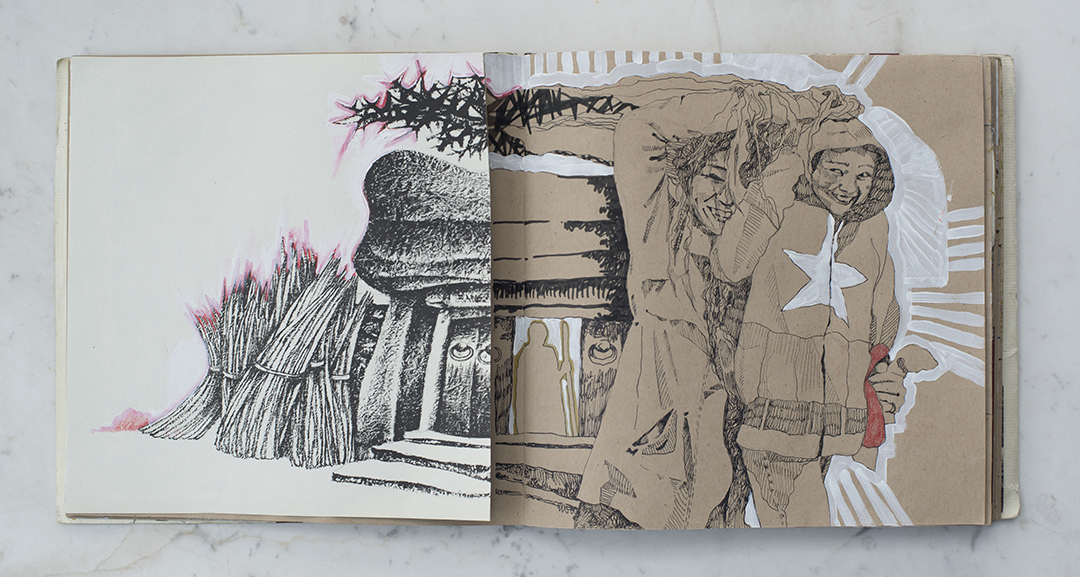
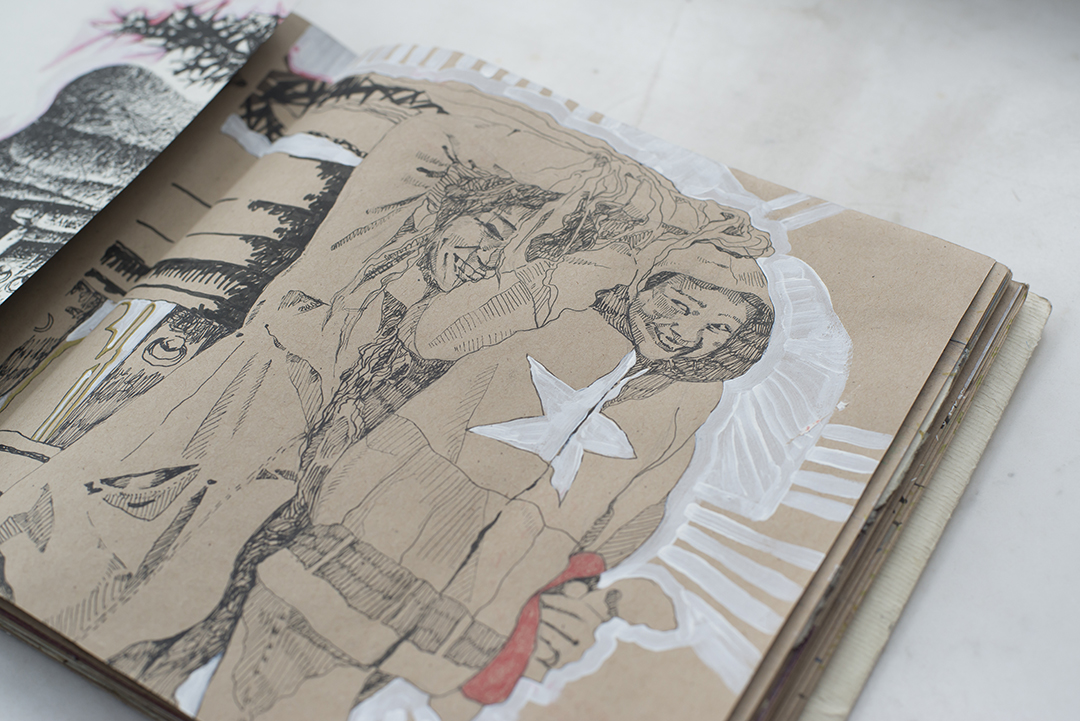
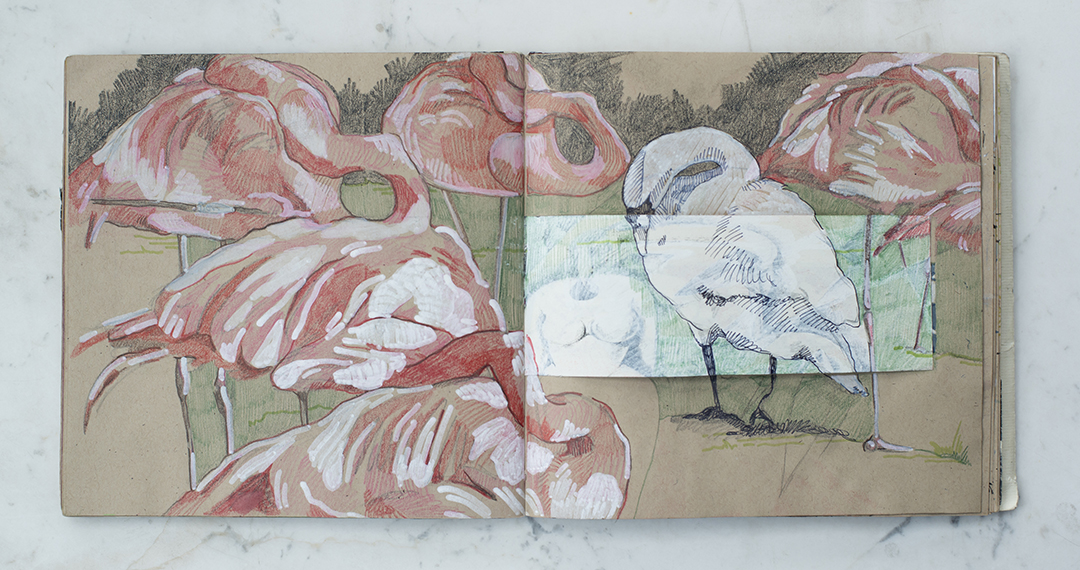
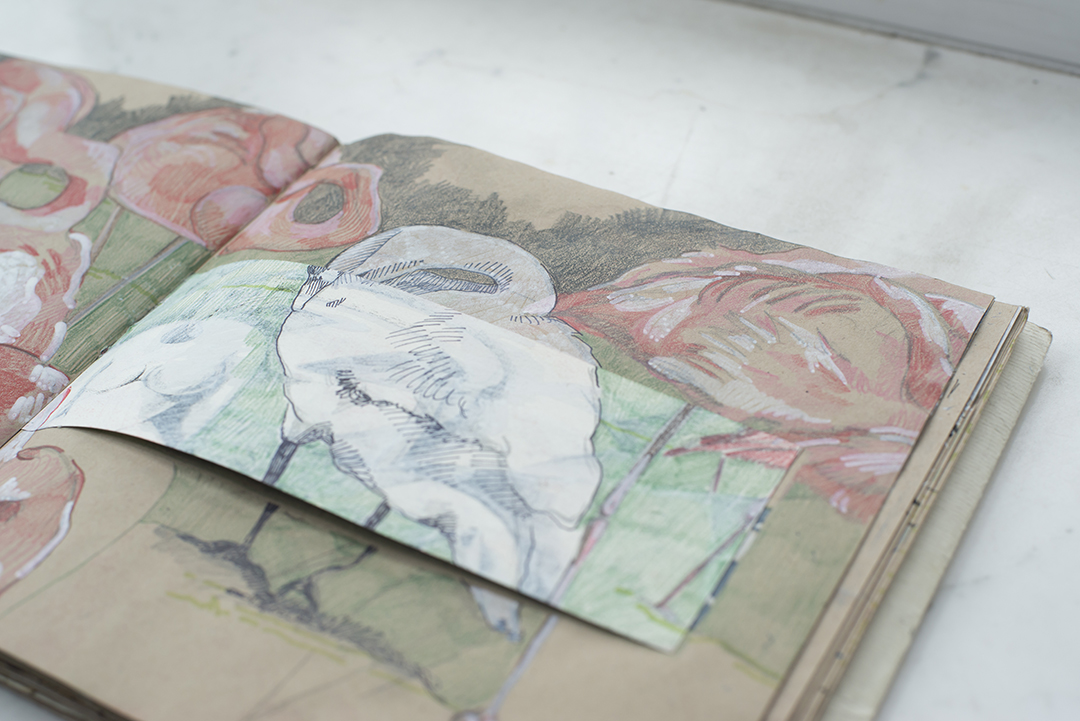
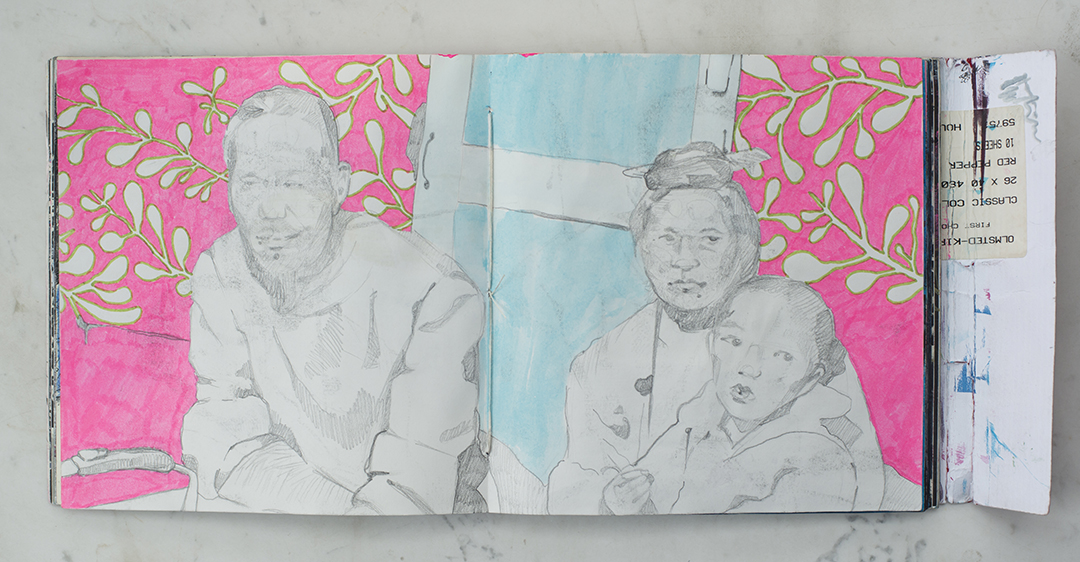

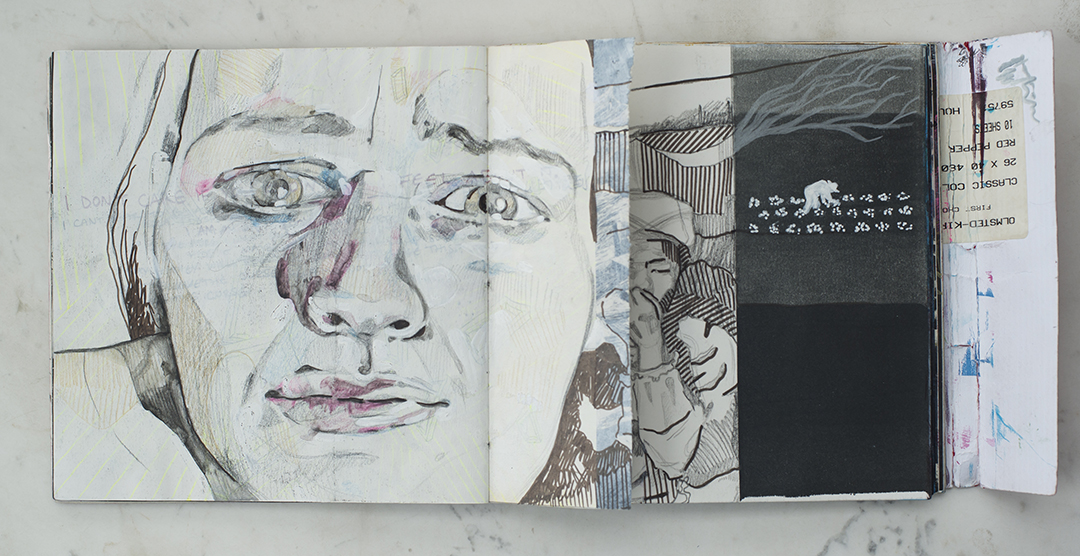
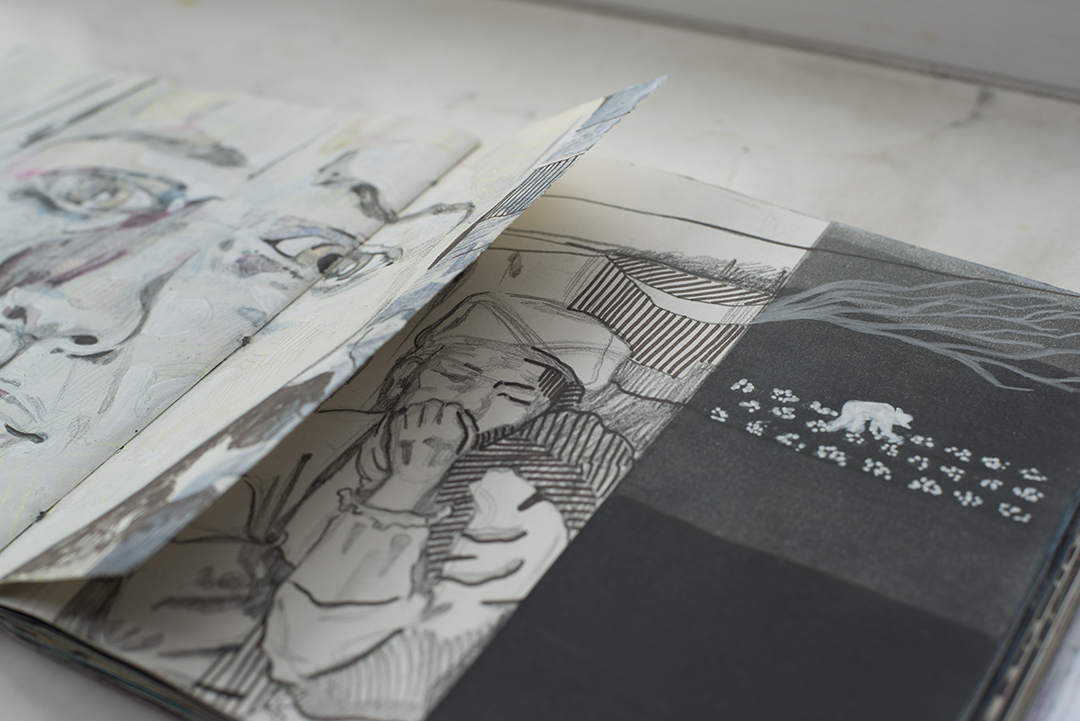
There was a lot of freedom in the process. I knew whatever problems I created, he would help me fix. And then, it's also fun to work to solve, delete, or solidify images and ideas he'd begun to flesh out. The pages grew thicker in ideas as we worked. Now, with the pages of each book almost filled, I look at it and I see something like a cut-away cross section of a city that I once visited in Egypt.
It was one of those ancient temples that had been buried by sand and time. Later, a church had been built on top of the temple - which was, by then, fully invisible under the sand. Atop that, centuries later, a mosque was built. Now that modern archeologists have brushed and peeled away the layers, you can walk through the streets of the temple and look up to see the odd layer-cake of religious structures teetering above.
When we meet to exchange the books, it's amazing to see what elements have been covered over or pulled out. Sometimes we've even forgotten what the page had looked like several exchanges before. This is a work of transformation and conversation.
In addition to the layering of thoughts and the call-and-response feel of the work, we learned a lot about each other's creative process, strengths, weaknesses, and even artistic volume of voice. His work was initially less committed, and more thoughtfully tentative, whereas mine was covering over and revealing and filling up space, solidifying lines, even thoughtlessly at times following the dictates of aesthetic with one half of my brain in the book, and the other out in space.
I loved the pop-up element of all his odd-sized pages, and the puzzles they created as some images needed to stand alone or be able to integrate and then pull away from other images as the pages turned. Sometimes I loved them, but my mind was too tired to deal with all their complexities, so I laid them aside for less braindead creative moments. Blank or simple pages were more intuitive, while the pop-up pages felt like differential equations: they required time, space, and planning if they were to work out successfully.
This book is really a conversation and response of two different artists and friends, with a third voice being the otherwise silent printmaker that we have never met. I'm truly sad to see this project coming to a close. I'm not sure what we will do with the resulting collection of images, but I hope it won't be the last of this sort of artistic conversations.